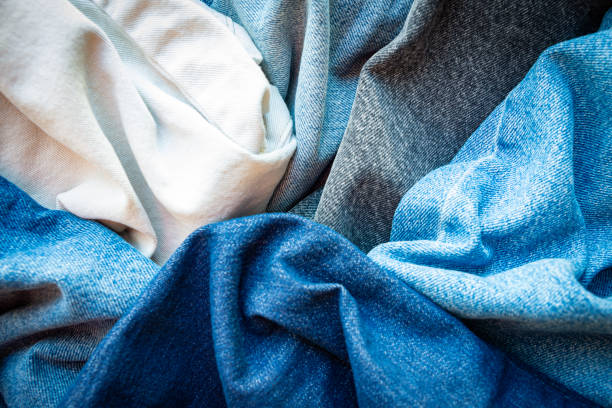데님의 독특한 매력은 마감에서 나오는 경우가 많습니다.. 스톤 워싱으로 청바지를 견고하게 만들어줍니다., 빈티지 페이드 스루 마모, 효소세척으로 더욱 부드러워지는 동시에, 천연효소를 사용하여 매끈한 피부 연출. 둘 다 사람들이 좋아하는 낡은 매력을 만들어내지만, 그들의 기술과 영향은 다릅니다. 이 문서에서는 각 프로세스의 작동 방식을 살펴봅니다., 그 효과, 소송 비용, 지속 가능성.
스톤 워시와 엔자임 워시 데님에 대한 최고의 통찰력
- 스톤 워싱은 부석으로 데님을 물리적으로 마모시켜 독특한 낡은 룩을 선사합니다., 효소 세척은 유사하지만 더 깨끗한 효과를 위해 생명공학을 사용합니다..
- 효소 세척으로 지속 가능성과 원단 관리가 향상됩니다., 그러나 일부 사람들은 석재 세척이 부여하는 진정한 질감과 미적 특성 때문에 여전히 선호합니다..
빠른 테이블: 스톤워시와 엔자임워시 비교
| 측면 | 스톤워시 | 효소세척 |
|---|---|---|
| 프로세스 유형 | 경석을 이용한 마모용 기계적 공정 | 셀룰라아제 효소를 사용하여 섬유질을 분해하는 생화학적 과정 |
| 주요 목적 | 러프를 생성하려면, 포도 수확, 심하게 퇴색된 모습 | 부드러운 것을 달성하려면, 깨끗한, 고르게 바랜 모습 |
| 시각 효과 | 강한 대비, 불규칙한 페이드, 견고한 질감 | 매끄러운 표면, 균일한 페이드, 현대적인 외관 |
| 손 느낌 | 약간 거칠다, 질감이 있는 | 부드러운, 경량, 그리고 편안하다 |
| 직물 손상 | 높음 - 결석은 섬유질을 약화시키거나 찢어질 수 있습니다. | 최소화 - 부드러운 작용으로 원단의 강도를 유지합니다. |
| 생산 비용 | 낮은 설치 비용, 그러나 기계의 마모가 더 높습니다 | 효소 및 온도 조절로 인해 약간 높음 |
| 결과의 일관성 | 제어하기가 더 어렵습니다. 배치마다 다를 수 있습니다. | 고도로 제어 가능 – 매번 일관된 마감 |
| 환경에 미치는 영향 | 높은 물 및 에너지 소비; 돌에서 나온 고형 폐기물 | 낮은 물 사용량, 생분해성 효소, 최소한의 낭비 |
| 장비 유지관리 | 자주 청소하고 석재 교체가 필요함 | 잔여물이 적어 유지관리가 더 간편함 |
| 적합한 데님 스타일 | 포도 수확, 엄격한, 작업복 청바지 | 현대의, 부드러운, 패션이나 프리미엄 청바지 |
| 색상 유지 | 더욱 공격적인 페이딩, 염료 보유력이 적음 | 부드러운 페이딩, 더 나은 색상 보존 |
| 처리 시간 | 일반적으로 여러 번의 세탁 및 헹굼 주기로 인해 시간이 더 길어집니다. | 더 짧고 효율적인 프로세스 |
| 편안함 수준 | 보통 – 세탁 시간에 따라 다름 | 높음 - 부드럽게 생성, 유연한 데님 |
| 확장성 | 전통적 또는 소규모 생산에 공통 | 산업용으로 이상적, 친환경 생산라인 |
| 지속가능성 등급 | ★★☆☆☆ (지속 가능성이 낮음) | ★★★★☆ (지속 가능성이 높음) |
스톤워시란 무엇인가요?
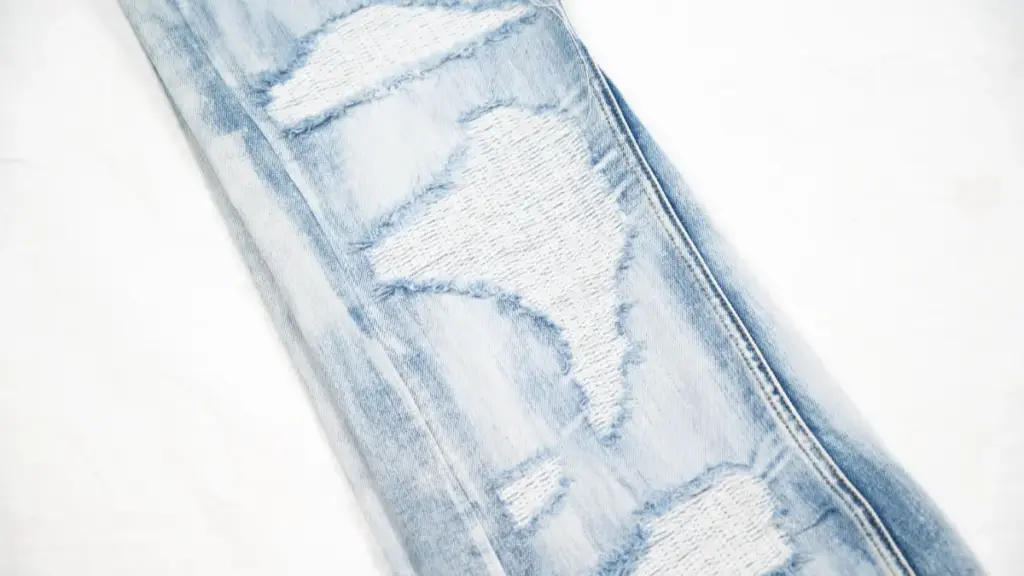
스톤 워싱은 가장 초기이자 가장 상징적인 데님 마감 방법 중 하나입니다.. 천연 또는 합성 경석을 사용하여 표면을 물리적으로 마모시키는 것입니다. 데님 원단, 희미한 만들기, 즉각적으로 부서진 듯한 질감의 룩.
이 과정은 빈티지 스타일의 상징이 되었으며, 진정성과 불규칙한 매력으로 인해 여전히 데님 문화에서 특별한 위치를 차지하고 있습니다..
석재 세척의 역사와 발전
석재 세척의 선구적인 기술은 1950년대 Donald Freeland에 의해 개발되었습니다., Great Western Garment Co의 생산 관리자. (G.W.G.) 캐나다에서. 소프트 복제를 추구, 수년간의 고된 노동을 통해 얻은 데님의 낡은 모습, 프리랜드는 산업용 세탁기에서 경석으로 청바지를 굴리는 실험을 했습니다.. 이 혁신으로 인해 G.W.G. 즉각적인 편안함을 위해 사전 연화되고 내구성이 뛰어난 청바지를 출시합니다., 저렴한 작업복, 시장에서 독특한 틈새시장을 포착하다.
1980년대에는, 소비자들이 견고한 디자인에 사랑에 빠지면서 이 기술은 폭발적인 인기를 얻었습니다., 고민스러운 미학. 청바지마다 조금씩 다르게 나왔어요, 시대의 데님 패션을 정의한 독특함을 더하다.
석재 세척 과정 설명
스톤 워싱은 천연 또는 합성 경석을 사용하여 마모된 느낌을 만드는 전통적인 데님 마감 방법입니다., 퇴색한 모습. 이 과정에는 데님에 특유의 질감과 부드러움을 부여하는 몇 가지 주요 단계가 포함됩니다.:
1. 준비 – 생 데님 옷을 짜는 과정에서 전분이나 화학 물질을 제거하기 위해 먼저 의류를 발호합니다.. 이는 직물이 물을 흡수하는 데 도움이 되고 세탁 과정이 더욱 효과적으로 진행되도록 돕습니다..
2. 기계 로딩 – 청바지는 경석과 함께 대형 산업용 세탁기에 투입됩니다.. 원하는 마모 수준에 따라 돌의 크기와 경도를 신중하게 선택합니다..
3. 세탁주기 – 기계가 회전합니다., 연마석이 데님 원단의 표면을 닦을 수 있도록 합니다.. 이러한 기계적 작용으로 직물 표면에서 인디고 염료가 제거됩니다., 자연스러운 퇴색 패턴 만들기. 세탁시간이 길어질수록, 효과가 더 뚜렷해.
4. 헹굼 및 중화 – 원하는 색상과 질감이 나온 후, 의류를 헹구어 돌 잔여물을 제거하고 중화하여 직물의 pH 수준 균형을 맞춥니다..
5. 마무리 손질 - 마지막으로, 데님이 부드러워졌어요, 건조한, 편안함을 강화하고 일관된 빈티지 룩을 얻기 위해 때로는 가볍게 샌딩하거나 브러싱 처리합니다..
스톤 워싱의 장점과 단점
장점
- 자연을 창조합니다, 진짜처럼 느껴지는 불규칙한 페이드.
- 즉각적인 부드러움과 유연성을 선사합니다..
- 많은 브랜드가 원하는 클래식한 "빈티지 데님" 룩을 제공합니다..
단점
- 높은 물 사용량과 과도한 에너지 소비.
- 돌은 기계와 청바지의 금속 부품을 손상시킬 수 있습니다..
- 섬유 마모로 인해 의류 수명 단축.
효소 세척이란??
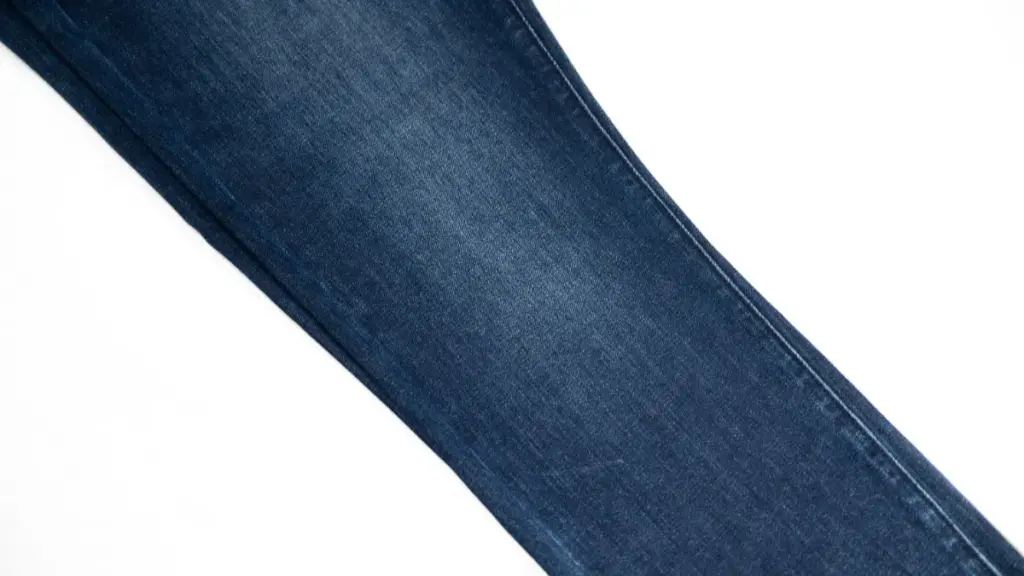
효소 세척, 바이오스토닝이라고도 불림, 경석 대신 셀룰라아제 효소를 사용한 차세대 데님 가공을 대표합니다.. 환경에 미치는 영향과 직물 손상을 줄이면서 유사한 퇴색 효과를 제공합니다..
효소 세척 과정 설명
효소세척은 현대적이다, 연마석 대신 천연효소를 사용하여 데님을 부드럽게 하고 은은한 느낌을 주는 친환경 마감공법, 낡은 모습. 작동 방식은 다음과 같습니다.:
1. 준비 – 데님을 먼저 디사이징하고 세척하여 불순물을 제거합니다., 돌을 씻는 것과 마찬가지로. 이를 통해 효소가 면 섬유에 직접 작용할 수 있습니다..
2. 효소 선택 및 혼합 – 특정 효소, 대개 셀룰라아제, 원하는 효과에 따라 선택됩니다.. 이 효소는 목화의 셀룰로오스를 표적으로 삼습니다., 원단 표면의 미세섬유를 분해하여. 세심하게 조절된 온도와 pH 수준에서 물과 혼합됩니다..
3. 세척 단계 – 데님을 효소액에 담가서 텀블링합니다.. 효소가 반응하면서, 표면의 인디고 염료를 부드럽게 제거해 줍니다., 매끄럽고 자연스럽게 퇴색된 모습을 연출합니다.. 반응시간이 길어질수록, 페이딩과 부드러움이 강할수록.
4. 반응 중지 – 원하는 결과가 달성되면, 온도를 높이거나 pH를 조절하면 효소 활성이 중단됩니다.. 이는 과도한 가공과 직물 약화를 방지합니다..
5. 헹굼 및 마무리 - 마지막으로, 청바지를 철저하게 헹구어 효소 잔여물을 제거합니다., 부드러워진, 그리고 말렸다. 결과는 청소기, 부드러운 촉감과 섬유 손상 최소화로 더욱 균일한 마감.
효소 세척의 장점과 단점
장점:
- 친환경: 효소는 생분해성이고 물이 덜 필요합니다., 에너지, 전통적인 석재 세척과 비교한 화학 물질.
- 직물에 부드럽게: 부석과 달리, 효소는 심한 마모나 찢어짐을 일으키지 않습니다., 데님의 강도와 수명을 보존합니다..
- 일관된 결과: 반응을 주의 깊게 제어할 수 있습니다., 최소한의 손상으로 균일한 색상 톤과 매끄러운 표면을 구현합니다..
- 부드러운 손 느낌: 효소 워싱 데님으로 편안하고 유연한 느낌, 패션과 라이프스타일 청바지에 이상적.
단점:
- 더 높은 생산 비용: 효소 제품 및 온도 제어 시스템은 단순한 석재 세척 설정보다 비쌀 수 있습니다..
- 제한된 효과: 심하게 디스트레스드되거나 울퉁불퉁한 룩을 위한, 효소는 돌처럼 강한 퇴색이나 빈티지 질감을 생성하지 않을 수 있습니다..
- 민감한 프로세스: 효소 활성은 정확한 온도와 pH 조건에 따라 달라집니다. 작은 변화도 최종 결과에 영향을 미칠 수 있습니다..
어떤 세탁 방법을 선택해야 할까요??
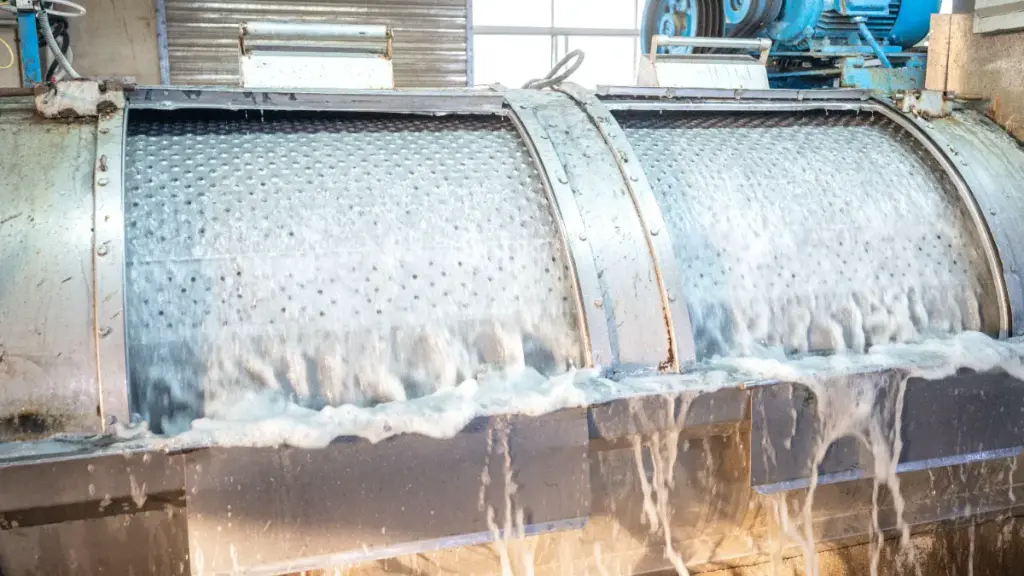
스톤 워시와 효소 워시 중 하나를 선택하는 것은 고객에게 어떤 종류의 데님 경험을 선사하고 싶은지에 따라 달라집니다..
목표 시장이 진정한 빈티지 룩을 중시한다면, 눈에 보이는 페이드, 헤리티지와 같은 견고한 질감, 스트리트웨어, 또는 캐주얼 작업복 청바지 - 그렇다면 스톤 워싱이 올바른 선택입니다. 대담한 대비와 자연스럽게 에이징된 외관을 제공하여 클래식 데님 스토리를 사랑하는 소비자에게 어필합니다..
청중이 편안함을 선호한다면, 깨끗한 미학, 모던한 부드러움과, 효소세척하러 가세요. 부드러운 마감을 중시하는 패션 브랜드와 프리미엄 데님 라인에 적합합니다., 지속 가능한 생산, 장기적인 원단 품질.
시각적인 질감과 부드러운 터치를 모두 원하는 제조사나 디자이너에게, 하이브리드 방법이 가장 효과적입니다.. 가벼운 스톤 워시와 효소 처리를 결합하여 천연 소재를 보존하면서 직물 손상을 줄입니다., 구매자가 좋아하는 낡은 룩.
요컨대:
- 스톤워시 → 굵은 글씨, 포도 수확, 질감이 있는.
- 효소 세척 → 매끄럽다, 현대의, 환경 친화적인.
- 콤비네이션 → 내구성과 편안함이 균형잡힌 외관.
Changhong Garment로 데님 브랜드 확장
유연한 파트너와 함께하세요, 빠른 샘플링을 제공하는 규정 준수 OEM/ODM 제조업체, 개인 상표 옵션, 스타트업과 기존 브랜드 모두에게 완벽한 트렌드 주도 데님 스타일.

관리와 장수: 스톤 워싱 및 엔자임 워싱 데님 관리
적절한 관리를 통해 데님의 매력을 유지하고 더 오래 지속할 수 있습니다.. 마감방법에 따라 원단에 미치는 영향이 다르기 때문에, 유지 관리 루틴도 달라야 합니다.
스톤워시드 데님 케어 팁
- 바랜 외부 표면을 보호하기 위해 세탁하기 전에 청바지를 뒤집어주세요..
- 추가 색상 손실을 최소화하려면 찬물과 중성 세제를 사용하십시오..
- 잦은 세탁은 피해주세요; 대신에, 가능하면 공기를 빼거나 부분적으로 청소하십시오..
- 수축과 섬유 스트레스를 방지하기 위해 평평하게 펴거나 매달아 자연 건조하세요..
- 작은 찢어진 부분을 조기에 수리하십시오. 스톤 워싱 처리된 데님은 해어지기 쉽습니다..
엔자임 워시드 데님 케어 팁
- 염료 재침착을 방지하려면 청바지를 찬물에 뒤집어서 세탁하세요. (등 염색).
- 부드러운 것을 선택하세요, 색상에 안전한 세제를 사용하고 표백제나 유연제는 피하세요..
- 적절한 헹굼을 보장하기 위해 세탁기에 과부하를 주지 마십시오..
- 최고의 색상 유지를 위해 직사광선을 피해 자연 건조하세요..
- 효소의 부드러움과 원단의 강도를 유지하려면 세탁 횟수를 줄여주세요..
결론
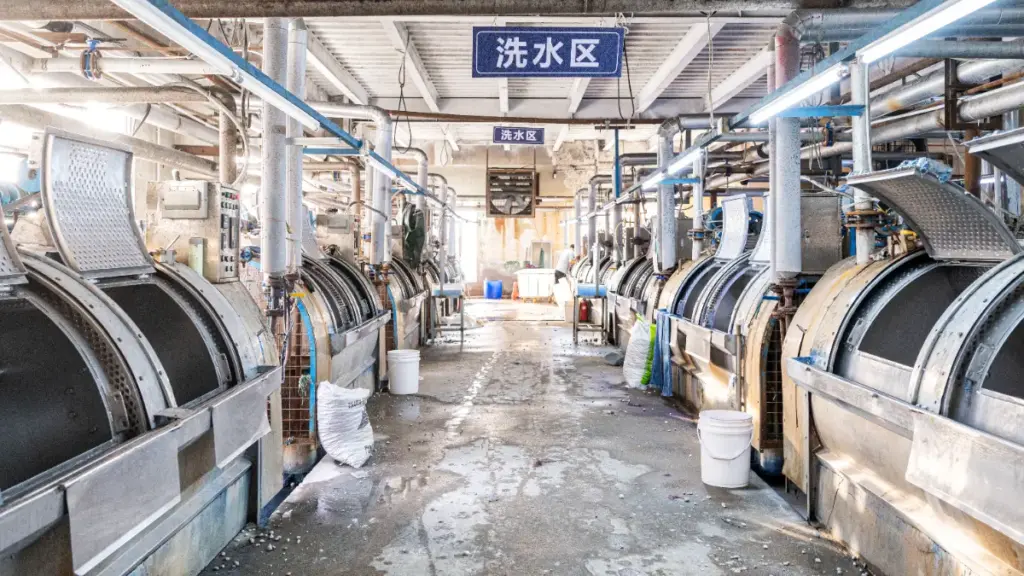
스톤워시와 효소워시 모두 데님에 독특한 아름다움과 가치를 선사합니다.. 중요한 것은 브랜드 스타일에 맞는 올바른 방법을 선택하는 것입니다., 품질 목표, 지속가능성 비전. 전문적인 데님 마감 처리를 원하거나 최상의 세탁 과정에 대한 안내가 필요한 경우, 오늘 우리 팀에 연락하세요 맞춤형 데님 프로젝트를 시작하려면.
자주 묻는 질문
스톤워시와 효소워시 차이점은 무엇인가요??
스톤워시는 경석을 사용하여 직물을 물리적으로 마모시킵니다., 거친 만들기, 페이딩이 강한 빈티지한 느낌. 효소 세척은 천연 셀룰라아제 효소를 사용하여 화학적으로 직물을 부드럽게 하고 퇴색시킵니다., 더 매끄럽게 만들어주는 것, 손상이 적고 환경 성능이 향상된 깔끔한 마감 처리.
데님 원단에 효소세척이 어떻게 작용하나요??
효소세척은 면사 표면의 미세섬유를 분해하는 생물학적 효소에 의존합니다.. 이렇게 하면 직물이 부드러워지고 인디고 염료가 일부 제거됩니다., 심한 마모 없이 미묘한 페이드와 편안한 느낌을 선사합니다..
스톤워시와 애시드워시의 차이점은 무엇인가요??
스톤워시는 경석의 물리적 마찰을 이용합니다., 산성 세척은 염소 또는 과망간산 칼륨과 같은 화학 물질을 사용하여 특정 부위를 표백하고 강조 표시합니다.. 산성 세척으로 고대비 패턴 생성, 스톤워시는 좀 더 자연스럽고, 고르게 착용된 모습.
효소 워싱 처리된 데님과 스톤 워싱 처리된 데님은 어떻게 관리해야 합니까??
두 가지 타입 모두 찬물에 뒤집어서 부드럽게 세탁해야 합니다.. 강한 세제와 높은 열을 피하세요. 스톤워시 데님은 직물 마모를 방지하기 위해 더욱 섬세한 취급이 필요할 수 있습니다., 효소 워싱 데님은 최소한의 관리로 부드러움을 유지합니다..





